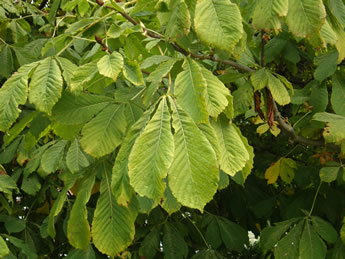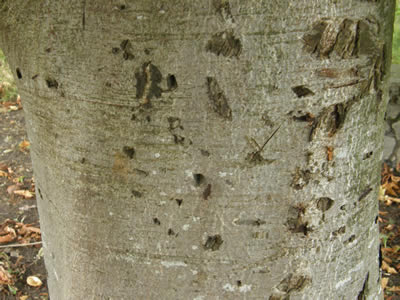|
| |
 |
_____Broadleaf Trees with Opposite, Compound Leaves |
| |
The Horse-chestnut, Aesculus hippocastanum
|
| | |
The Horse-chestnut, or Conker Tree, is native to Europe and Asia
and was introduced to North America in the 18th century.
|
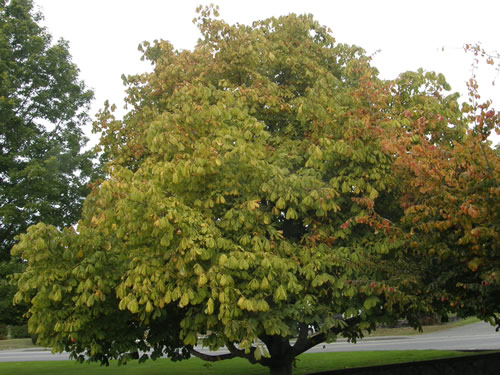 |
The Horse-chestnut has a straight trunk, which often forks, and long, drooping branches. It is a fairly large deciduous tree, growing 60-80 ft/18-24 m tall with a trunk diameter of 1-2.5 ft/.3-.75 m. |
| | |
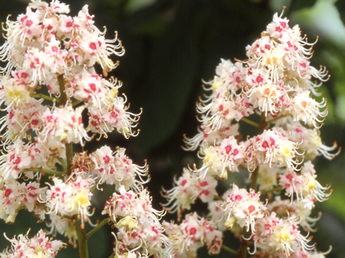 |
|
The mature flowers are white with red or yellow markings and grow in showy, upright clusters.
The leaves have 5 to 7 leaflets which grow on a 3-7 in/8-18 cm long stalk. The leaflets are 4-10 in/10-25 cm long and 2-5 in/5-13 cm wide, with fine teeth and are dark green above and paler underneath. In the autumn they turn brown or dull yellow. |
| |
|
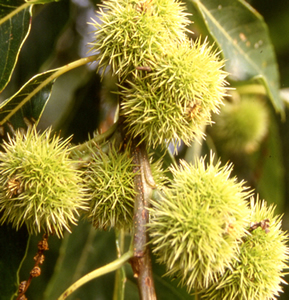 |
|
The fruit of the Horse-chestnut is covered with prickles. The tree's bark is red-brown or gray and often scaly. |
| |
|
 |
The seeds of the Horse-chestnut are poisonous. In this photograph, the mature fruit has lost its prickly coat. Inside will be one (sometimes two) brown seeds, often called conkers. |
|
| | |
|
|
|
| |
| Dereila Nature Inn Home > Woodlands Pathway > Walking in the Wild > The Horse-chestnut |
|
|





